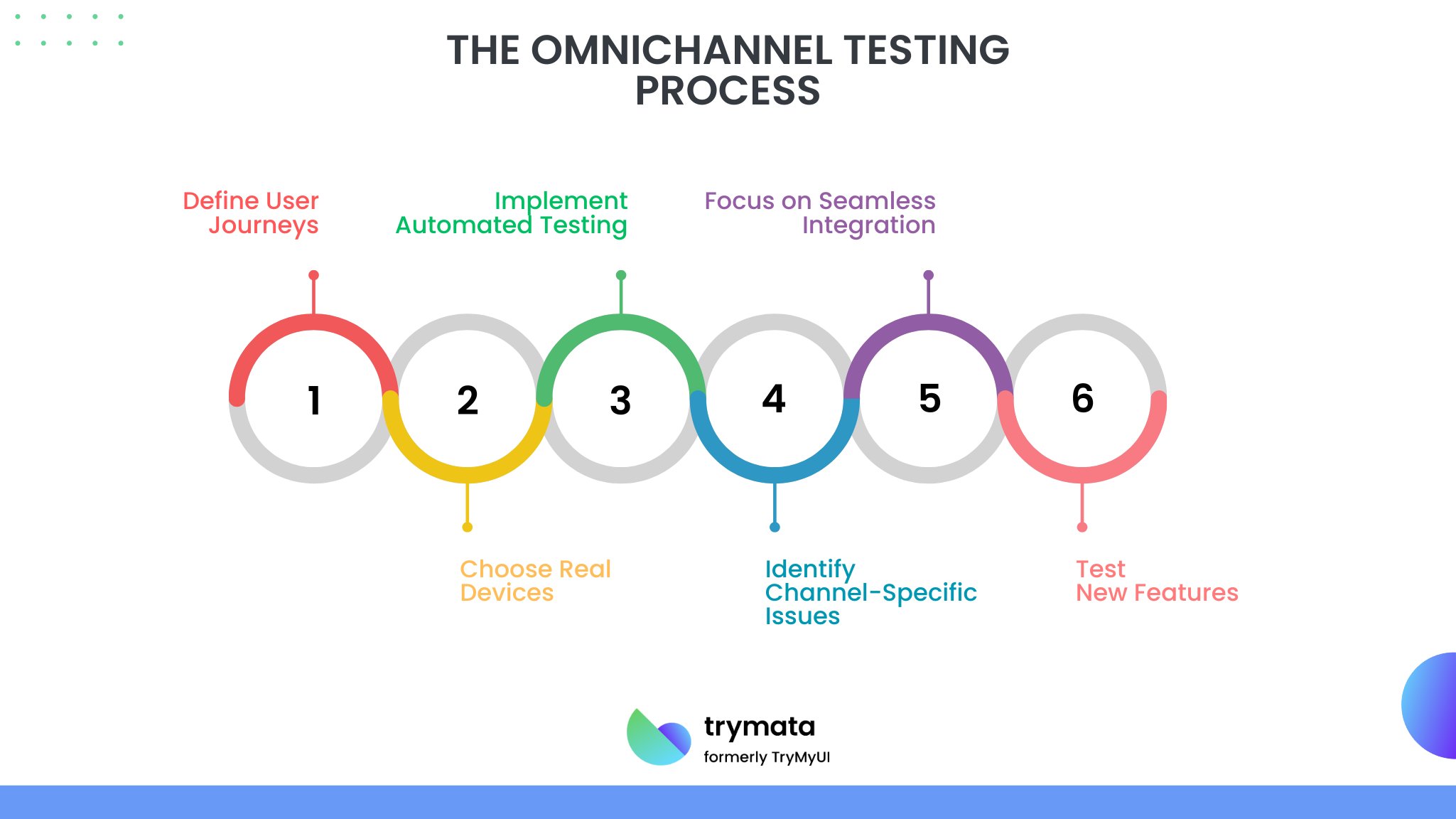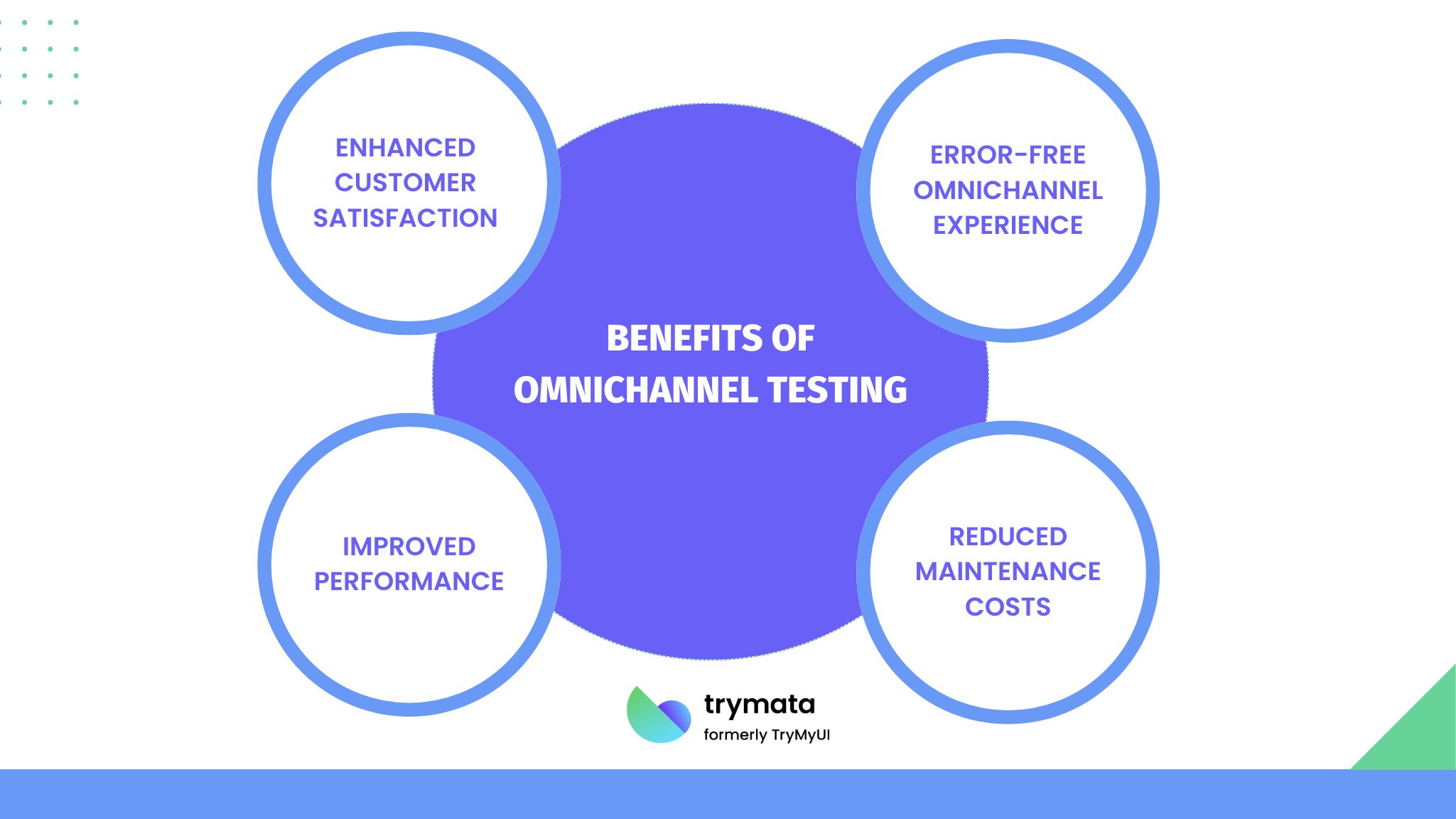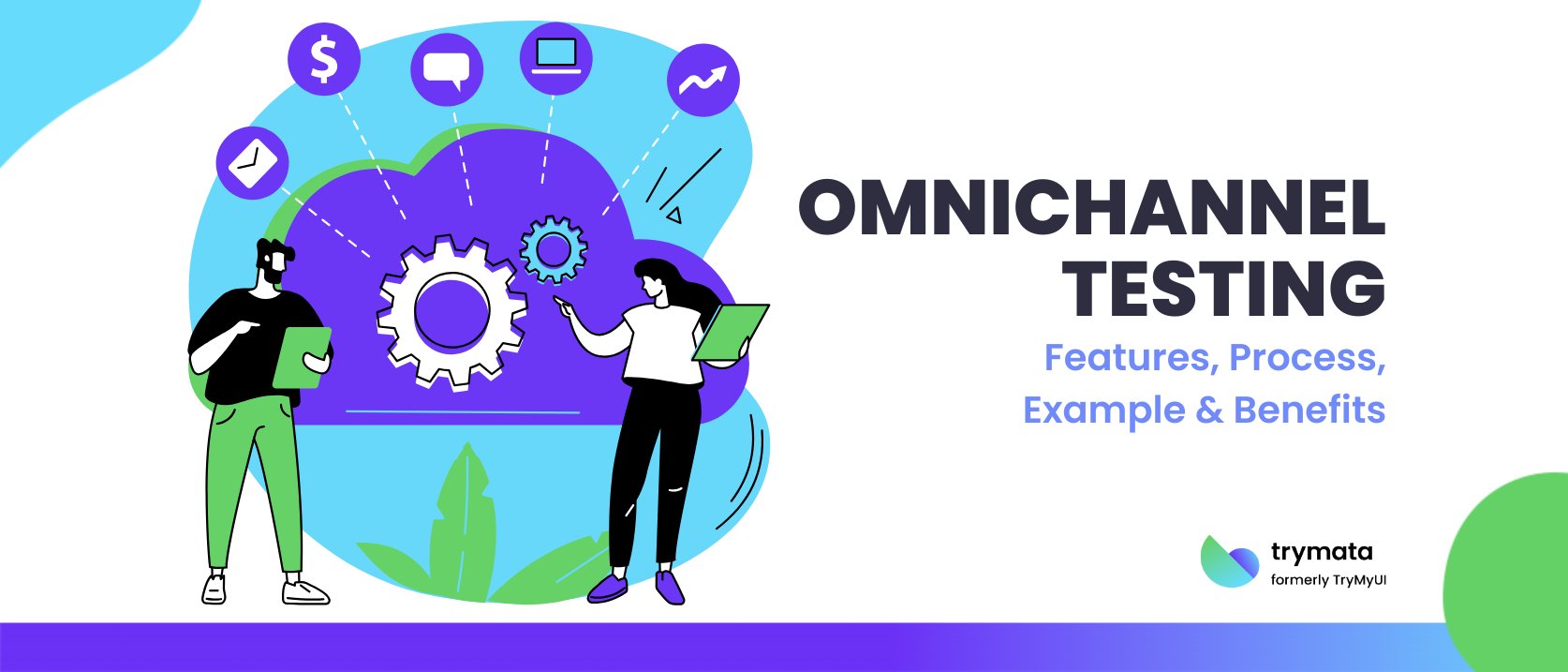Customers interact with businesses across various platforms, so ensuring a seamless and consistent experience is critical. From mobile apps and websites to in-store systems, how users engage with your brand defines their satisfaction.
Omnichannel testing guarantees this harmony across platforms, allowing businesses to deliver exceptional user experiences without friction.
Let’s explore what omnichannel testing entails, its process, and how it enhances the customer journey.
What is Omnichannel Testing?
Omnichannel testing evaluates applications or systems’ functionality, usability, and performance across multiple channels and devices. These channels include mobile devices, desktop computers, web browsers, in-store experiences, and mobile apps.
The goal is to ensure seamless integration and a consistent user experience, regardless of the touchpoints they use during their journey.
Why is Omnichannel Testing Important?
- Customers engage with brands across multiple channels, including mobile devices, desktop computers, and in-store systems.
- Ensuring a unified user experience is crucial for maintaining customer satisfaction.
- Omnichannel testing guarantees a reliable and consistent experience regardless of how users access services or platforms.
Important Omnichannel Testing Features
Omnichannel testing is a multifaceted process that covers various critical aspects to ensure a flawless customer experience. Below are the key areas that demand attention.
1. Functionality Testing
Functional testing ensures that all features work as intended across multiple channels. It focuses on areas like:
- Payment processing
- Search functionality
- Navigation between pages
- Cross-platform data synchronization
For example, testing whether a customer’s saved preferences on a desktop are reflected on their mobile app ensures consistent functionality.
2. Performance Testing
Performance testing evaluates the speed and reliability of an application or system under different conditions. It helps identify issues like slow loading times, server crashes, or lagging responses, which can negatively impact the omnichannel customer experience.
3. Usability Testing
Usability testing focuses on the user journey and examines how customers interact with the platform. Testers assess ease of use, intuitiveness, and potential usability issues, ensuring customers can navigate and complete tasks effortlessly across multiple devices.
Best Practices for Omnichannel Testing
Adopting best practices in omnichannel testing can simplify the process and yield optimal results. Below are actionable tips to enhance testing efforts.
- Leverage Automation: Automation revolutionizes efficiency. Automated testing tools can significantly reduce time and effort while ensuring thorough coverage across channels.
- Test from the User’s Perspective: Empathy in testing matters. Focus on the user experience and journey to identify potential pain points.
- Prioritize Key Touchpoints: Optimization starts with focus. Identify and prioritize the most frequently used channels and devices to optimize the testing process.
- Collaborate Across Teams: Teamwork drives success. Involve developers, testers, and stakeholders to ensure a comprehensive testing strategy.
- Use Analytics and User Feedback: Data drives improvement. Incorporate analytics data and user feedback to understand real-world usage patterns and refine the testing process.
The Omnichannel Testing Process
Executing a robust omnichannel testing process requires a clear framework. Below are the essential steps to ensure an impeccable customer experience across channels.

1. Define User Journeys
Understanding the user is at the heart of omnichannel testing. Begin by mapping out how users interact with the application across various channels.
This involves identifying touchpoints such as web browsers, mobile apps, or in-store systems to understand the omnichannel journey from the customer’s perspective.
2. Choose Real Devices
Accuracy in testing demands real-world conditions. Testing on real devices, such as phones, tablets, and desktop computers, ensures accurate results. Emulators and simulators can supplement the process but should not replace real-device testing.
3. Implement Automated Testing
Automation is a game-changer in omni channel testing. It streamlines the testing process and helps identify usability issues quickly. Automated testing tools can simulate user interactions across multiple channels, saving time and resources.
4. Identify Channel-Specific Issues
Each channel may have unique requirements or limitations. For example, testing an in-store kiosk may focus on hardware integration, while mobile apps may require additional checks for touch gestures.
5. Focus on Seamless Integration
In the omnichannel landscape, consistency is key. Ensure that data flows consistently across multiple touchpoints. For example, a customer’s account information and preferences should remain accessible regardless of their device or channel.
6. Test New Features
Innovation thrives on reliability. Comprehensive omnichannel testing is crucial to maintaining a seamless user experience whenever new features or updates are introduced.
Omnichannel Testing Example
Omnichannel testing is key for businesses that want to deliver a seamless customer experience across multiple channels. It means that interactions are consistent and effective whether customers interact via the website, mobile app, social media, or in-store. Let’s take an example to show you why.
A retail brand is launching a new season promotion. The campaign includes discounts via email, mobile app notifications, in-store posters, and social media ads. The brand wants to test the campaign across all channels and measure customer response.
Step 1: Set Baselines
Before testing, the team reviews historical data to understand typical customer engagement metrics for each channel, such as email open rates, app push notification click-through rates, and in-store foot traffic.
Step 2: Create Test Variants
Two promotional messages are created: one about product benefits and the other about urgency with a limited-time offer. Both are deployed across all channels simultaneously.
Step 3: Measure Engagement
The team uses analytics tools to track customer behavior. For example, they compare how customers respond to push notifications to social media ads. In-store, they track how many customers mention the promotion to sales staff or use a scannable code.
Step 4: Get Insights
The results show that urgency messaging performs better across digital channels but has no impact in-store. Benefit messaging resonates with in-store customers who want a consultative buying experience.
Step 5: Opt for Future Campaigns
Based on this, the team adjusted their strategy. Future campaigns may use urgency messaging for digital and product-focused messaging for in-store promotions.
Omnichannel testing like this helps businesses tailor their approach and deliver better customer experience across every touchpoint.
Benefits of Omnichannel Testing
The advantages of omnichannel testing extend far beyond mere functionality. Businesses that invest in thorough testing can enjoy various benefits, including enhanced customer satisfaction and operational efficiency.

- Enhanced Customer Satisfaction: Modern customers demand excellence. Businesses can improve customer satisfaction by addressing usability and functionality issues, leading to higher retention rates.
- Error-Free Omnichannel Experience: Imagine navigating a flawless journey across platforms. Testing ensures users face minimal disruptions, creating a reliable and quality experience across multiple touchpoints.
- Improved Performance: Performance is non-negotiable. Identifying and resolving performance issues contributes to faster load times and a more efficient user journey.
- Reduced Maintenance Costs: Prevention is better than cure. Proactive testing helps detect potential issues early, reducing the costs of fixing problems post-launch.
Challenges in Omnichannel Testing
While omnichannel testing is indispensable, it also presents challenges. Understanding these hurdles is essential for crafting effective testing strategies.
- Multiple Channels and Devices: The diverse range of devices, browsers, and platforms makes it challenging to test all combinations.
- Maintaining Consistency: Ensuring a consistent experience across various channels and touchpoints requires meticulous attention to detail.
- Resource-Intensive Process: Comprehensive testing across multiple channels can be time-consuming and resource-heavy, especially without the right tools.
Conclusion
Omnichannel testing is critical for delivering a seamless and consistent customer experience across multiple channels and devices. Businesses can address channel-specific issues and provide an exceptional omnichannel customer experience by focusing on functionality, performance, and usability.
Companies can ensure reliability, quality, and customer satisfaction in an increasingly interconnected world through automation, real-device testing, and user feedback.




